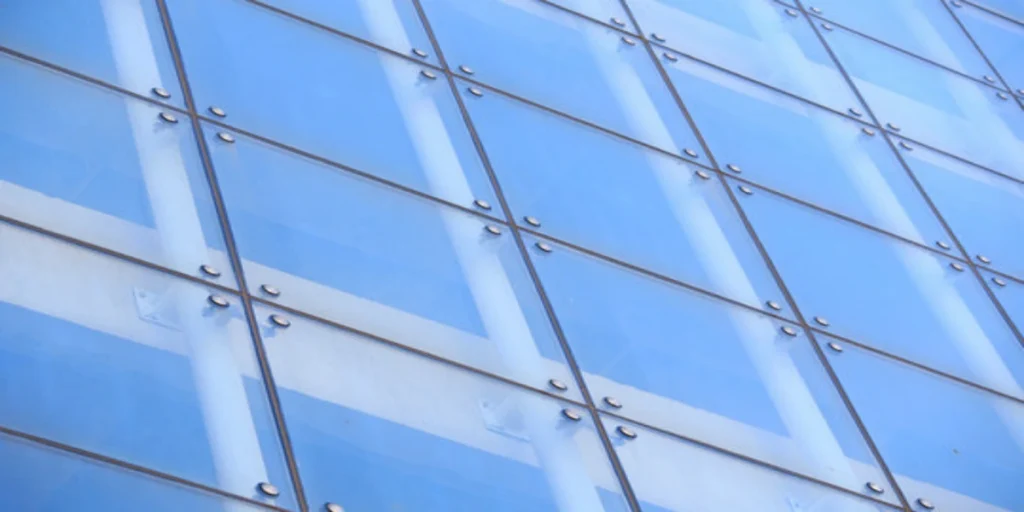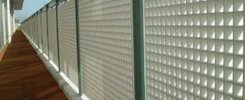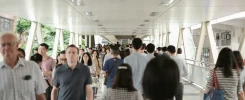When you walk past those tall buildings, have you ever looked up at their sleek and modern facades? These facades are known as curtain walls, and the style usually represents the overall building. This system can blend form and function perfectly. So, to give you a better idea of what this is all about, we’ve compiled a wide range of information about them. This includes materials, benefits, types, and more.
What is a curtain wall?
It is a non-load-bearing facade system installed on the exterior structure of a building. It is commonly composed of aluminum alloy, glass, ceramics, and other materials, and forms a continuous facade through the combination of materials and installation techniques. There is usually a gap between the curtain wall and the main body of the building, which can be used for thermal insulation, heat insulation, and waterproofing. Generally speaking, the curtain wall system is relatively light, strong, and aesthetically pleasing, making it decorative for the building.

Curtain wall materials and components
The materials used in curtain walls can usually be divided into four categories: skeleton materials, panels, sealing materials, and hardware.
The skeleton materials are usually aluminum profiles and steel. Aluminum has good performance, its density is small, has good stability, and is easy to clean. Steel is often used in larger curtain wall projects or as a connection between the aluminum curtain wall and the building. HY Industrial, as a full-service technology company, has completed many curtain wall projects around the world. Besides that, we can also provide excellent aluminum profiles for your project. Its overall weight is one-third of carbon steel products, with lower material costs.
Panels, on the other hand, are mainly glass, aluminum, stone, and stainless steel panels. The use of such materials upgrades the quality of the curtain wall and its aesthetics.
Sealing materials mainly include silicone structural adhesive, weatherproof sealant, spacer double-sided tape, sealing tape, foam rods, etc.
Hardware accessories include connecting materials, aluminum hangers, bolts, and anchors.
Types of curtain wall
As the field of construction has evolved, the materials used to build curtain walls have become more diverse. Therefore, we have categorized the curtain wall according to the material.
Glass curtain wall
The types of glass used in curtain walls are monolithic glass, churned glass and insulating glass. Glass curtain walls are more permeable and can bring bright natural light into the room. Transparent glass brings modernity and aesthetics to the building. However, the fire resistance of glass is weak, and it will melt or break when it encounters fire. And its reflective qualities can cause migratory birds to crash into the glass curtain wall and die.

Plastic curtain wall
Plastic as a new type of curtain wall material is also frequently used in recent years, the material of plastic curtain walls is usually composed of polycarbonate, polyethylene, and other materials. Compared with traditional tempered glass curtain walls, plastic curtain walls are lighter in weight and easier to transport and install. It is also easier to process and can be easily cut according to different needs. Of course, the characteristics of the material determine the lower cost of plastic curtain walls.
Of course, plastic materials are not as durable as glass and metal and are likely to break down over time. Plastic curtain walls are also poor at fire protection, which can lead to the spread of fire.
Aluminum curtain wall
Aluminum curtain walls are usually made of high-quality, high-strength aluminum alloy sheets. Aluminum curtain walls are lightweight, strong, and have good corrosion resistance. Processing, transportation, installation, and construction are relatively easy to implement, providing strong support for its widespread use, and color diversity, and can be combined and processed into different appearance shapes. Aluminum has a stronger fireproof performance, and the interlayer will also be placed in the fireproof material.
Aluminum is a material that expands and contracts significantly with temperature changes. Blistering and peeling may occur if the curtain wall system is not designed and installed properly.

Advantages of curtain walls
The curtain wall is an independent and complete overall structural system, it has wind pressure deformation, lightning protection, fire prevention, and other functions. It has good watertightness, airtightness, seismicity, and heat preservation. The curtain wall and other panels are lighter in weight, reducing the weight of the building while reducing the cost of the project.
The best thing is that it can be designed according to the project needs of different shapes, and colors, choose different materials, and better integration with the building. As it is built in the building envelope, it is more convenient for timely maintenance and updating, and it can also be matched with other smart technologies. That’s why curtain walls will be the first choice for modern construction projects.
Conclusion
As we’ve discussed throughout this guide, curtain walls are a great piece of modern architecture and engineering. From its ability to create visually stunning facades to its energy-efficient design and durability, these systems have forever changed the way we build and experience buildings.
Once you’ve learned the basics about curtain walls, including materials, categories, and benefits. Whether you’re an architect, engineer, or someone who simply appreciates the beauty of modern architecture, learning about the intricacies of curtain walls can be a fascinating journey. So the next time you look up at a soaring tower, remember how that smooth, seamless curtain wall was created through incredible ingenuity and innovation.


